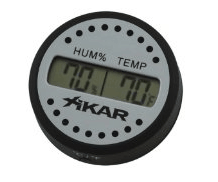After the winter of our discontent, well at least in our Northern climes, Spring is (almost) here.
Thoughts turn to verse:
You can’t see Canada across lake Erie, but you know it’s there. It’s the same with spring. You have to have faith, especially in Cleveland. ~Paul Fleischman
People ask me what I do in winter when there’s no baseball. I’ll tell you what I do. I stare out the window and wait for spring. ~Rogers Hornsby
Well in this twitter age, thoughts turn to mush some would say.
Maybe T.S. Eliot is more on the mark:
April is the cruelest month, breeding Lilacs out of the dead land, mixing Memory and desire, stirring Dull roots with spring rain.
Anyway, screenprinters in Spring weather need to take notice as it may be the cruelest month indeed.
Screen room: People make lousy hygrometers (that’s a device that measures humidity.) In other words, don’t trust yourself to judge, you need to buy one. If you don’t have one, get one, it will be $10 to $30 well spent. A human being cannot tell the difference between 35% and 70% humidity in a screen room but a hygrometer can, and it makes a huge difference what the humidity is.

In Spring you don’t have your heat on and you aren’t yet using your air conditioner. This means that particularly in rainy weather, you are not drying out your screen room. It is time to put on your dehumidifier. Get your humidity under 55% and no lower than 35% or you will have screen issues. Store your screens in that humidity as well or they will just act like sponges and soak up water and you will have all kinds of problems from pinholes to difficulty reclaiming.
Print Room: On cold Spring days you may have to turn up the temperature on your dryer or better yet, slow down the belt. Particularly with thick garments and even more so with canvas, you may have curing problems. In Summer the garments are warm, in Winter the heat may be on and warming up the garments. In Spring the garments may actually be the coldest of the whole year and your dryer has to bring them up to temperature when curing the ink and if they are twenty degrees colder than other times of the year, that may take a longer time under the heat.
They also may have absorbed moisture from the air, and that may have happened in the warehouse you received them from or even in the truck that delivered them. What will happen is that as the fabric goes through the dryer the moisture evaporates and cools the fabric, which keeps the temperature below that which would normally cure your ink.
Solutions? Higher temperature, longer time in the oven, flash in your last station before putting on the belt, or in extreme cases running the piece through the dryer before printing. If you do the latter, cover the pile afterwards so as not to reabsorb moisture.
Get our your curing testing equipment and make sure you are ok, i.e. wash and dry the printed garment or canvas bag and see if the ink stays on.
Oh yeah, and if you think you are exempt because of the ink you use, you aren’t. The preceding are issues no matter what type of ink you use.
Happy Spring!


Comments